Probing the quantum origin of spacetime
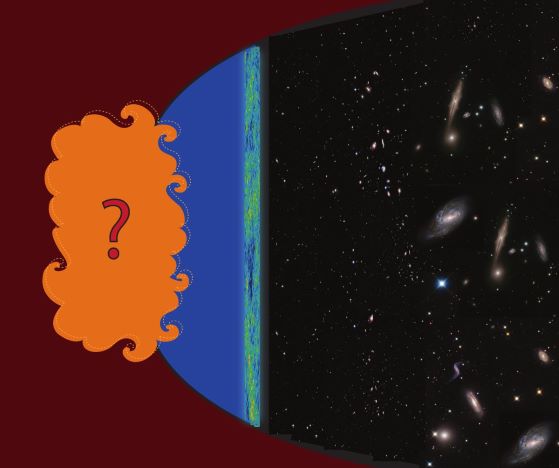
Theo Murphy meeting organised by Dr Steffen Gielen and Dr Jean-Luc Lehners.
Quantum theory describes the behaviour of matter, but was it in fact also instrumental in explaining the structure of space and time? This meeting will discuss how the quantum properties of spacetime can change our understanding of the foundations of cosmology, and how their impact could be tested observationally in the near future.
Attending this event
This meeting has taken place.
Image credit: NASA/ESA and Jean-Luc Lehners.
Organisers
Schedule
Chair
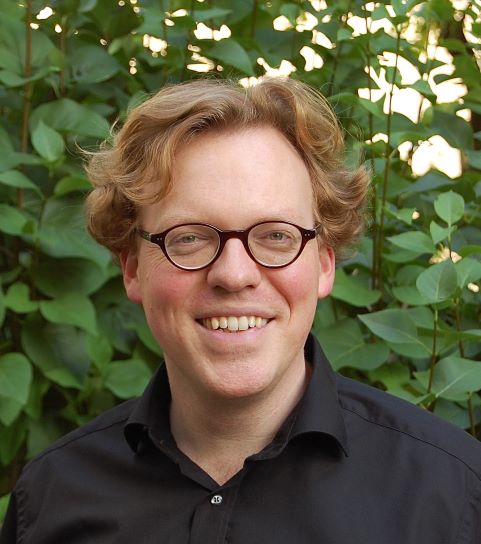
Dr Jean-Luc Lehners, Max-Planck-Institute for Gravitational Physics (Albert-Einstein-Institute), Germany

Dr Jean-Luc Lehners, Max-Planck-Institute for Gravitational Physics (Albert-Einstein-Institute), Germany
Jean-Luc Lehners (born 1978 in Luxembourg) studied physics and mathematics at Imperial College London and at the University of Cambridge. He obtained his PhD in 2005 at Imperial College for his research on braneworlds in supergravity. After holding postdoctoral positions at the University of Cambridge, Princeton University (USA) and the Perimeter Institute (Canada), he established the Theoretical Cosmology group at the Max Planck Institute for Gravitational Physics (Albert Einstein Institute) in Potsdam in 2010. Dr Lehners is the recipient of both an ERC Starting Grant (2010) and a Consolidator Grant (2017). He works on early universe cosmology, with a particular emphasis on the big bang as well as on quantum effects in cosmology.
| 09:00-09:05 |
Welcome by the lead organiser
|
|---|---|
| 09:05-09:30 |
Primordial black holes: fine-tuning and fine expectations
Primordial black holes are a fascination means to probe both the contents and the initial conditions of the universe, because something non-standard needs to have happened in the first second after the Big Bang for them to exist. Dr Byrnes will discuss the extreme sensitivity of the primordial black hole number density to changes in the inflationary model which could have generated them, but how this means the detection of any primordial black hole would be extremely informative. 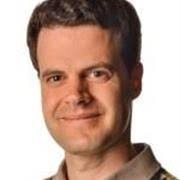
Dr Christian Byrnes, University of Sussex, UK

Dr Christian Byrnes, University of Sussex, UKDr Christian Byrnes was educated in the UK, from the Steiner School South Devon to Exeter College for A levels, then Cambridge to study maths including part III, and finally becoming a doctor at the ICG in Portsmouth. After this Dr Byrnes was restless and spent the next five years abroad, four of them in Germany, divided between Heidelberg and Bielefeld. His final year abroad was at CERN, the worlds largest and most powerful laboratory, although his research remained firmly above ground, with a view of Mont Blanc. From October 2012 until December 2019 Dr Byrnes was a Royal Society URF at Sussex University and he is still here, now as a Reader in Physics. Dr Byrnes' main research is into primordial black holes and the initial conditions of the universe, such as inflation and primordial non-Gaussianity. |
| 09:30-09:45 |
Discussion
|
| 09:45-10:15 |
Primordial black holes as a probe of quantum gravity and higher dimensions
Primordial black holes (PBHs) may have formed in the early universe and provide an important link between microphysics and macrophysics. In the macroscopic context, it has been proposed that PBHs larger than 1015g could explain various cosmological conundra: the existence of dark matter, the cosmic photon-to-baryon ratio, unexplained microlensing events, some of the LIGO/Virgo/KAGRA gravitational wave events, the puzzling early formation of certain cosmic structures, and the existence of supermassive black holes in galactic nuclei. Since PBHs form from quantum fluctuations in the early universe, this provides an indirect probe of quantum spacetime. In the microscopic context, the existence of Hawking radiation provides a direct probe of quantum spacetime and offers a unification of relativity theory, quantum mechanics and thermodynamics. However, only PBHs could be small enough for such radiation to be detectable and only those smaller than 1015g would have evaporated completely by now. Finally, black holes of 10-5g may provide a probe of higher dimensions, a possible link between elementary particles and black holes, and quantum gravity itself. 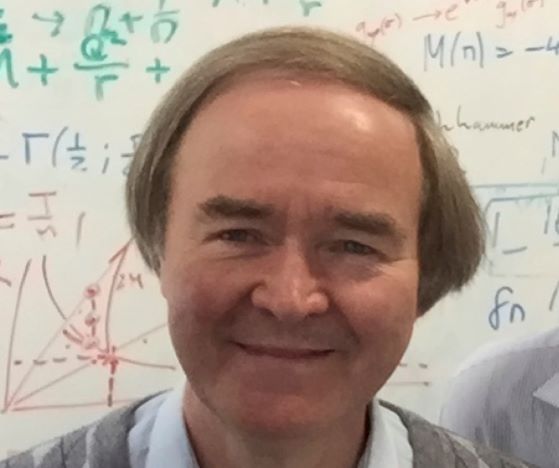
Professor Bernard Carr, Queen Mary University of London, UK

Professor Bernard Carr, Queen Mary University of London, UKBernard Carr is Emeritus Professor of Mathematics and Astronomy at Queen Mary University of London. His area of research is cosmology and astrophysics and includes such topics as the early universe, dark matter, black holes and the anthropic principle. For his PhD he studied the first second of the Universe, working under the supervision of Stephen Hawking at the Institute of Astronomy in Cambridge and the California Institute of Technology. He then held Fellowships at Trinity College and the Institute of Astronomy in Cambridge before moving to Queen Mary College. He has also held Visiting Professorships at Kyoto University, Tokyo University, the Fermi National Accelerator Laboratory and the Canadian Institute for Theoretical Astrophysics. He is the author of around three hundred scientific papers, editor of the book Universe or Multiverse? and co-author of the book Quantum Black Holes. |
| 10:20-10:30 |
Discussion
|
| 10:30-11:00 |
Break
|
| 11:00-11:30 |
Gravitational signatures of warped throats
Warped compactifications provide a rich arena to explore phenomenological and cosmological questions such as the hierarchy problem, cosmological inflation, dark energy and dark matter. In this talk, the author will discuss gravitational signatures arising from compactifying type IIB string theory on a compact space containing a warped throat. He will focus on the gravitational sector of the resulting 4d EFT, with its tower of Kaluza-Klein (KK) gravitons. By assuming that we live on a (3+1)-dimensional brane within the throat, the author will discuss how the Newtonian potential is modified, and how these modifications can be tested by gravitational experiments. The author will then discuss how the extra massive KK gravitons in warped throats affect gravitational wave signals and its possible tests at current and future gravitational wave experiments. 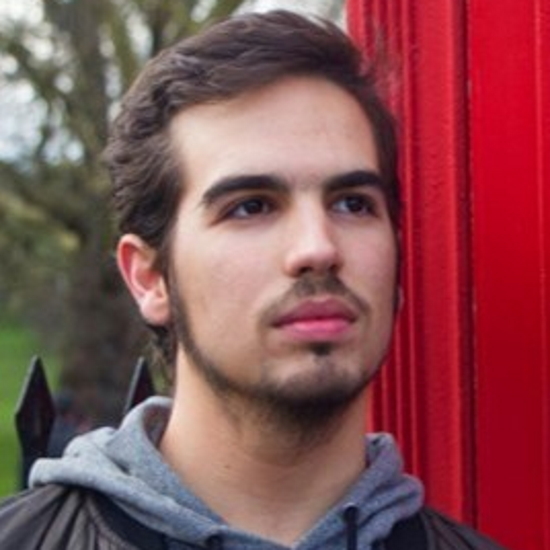
Bruno Valeixo Bento, University of Liverpool, UK

Bruno Valeixo Bento, University of Liverpool, UKBruno Valeixo Bento is a final year PhD student at the University of Liverpool, where his research has focused on phenomenological aspects of warped compactifications of string theory, in particular on their gravitational and cosmological signatures (dark energy, inflation, gravitational waves). More broadly he is interested in the imprints left by UV physics on the low-energy EFTs (eg the swampland and positivity bounds programmes) and how these may help us connect string theory with current and future experiments. He is also interested in other approaches to quantum gravity, such as causal set theory. Bruno obtained his MSc degree from Imperial College London and will be joining IFT Madrid for his first postdoctoral position. |
| 11:30-11:45 |
Discussion
|
| 11:45-12:15 |
Non-equilibrium quantum dynamics in cosmology
Dr Brahma will discuss inflation as an open quantum system and derive quantum corrections to cosmological observables, such as the power spectrum, showing explicitly why it is important to go beyond standard (Wilsonian) effective field theory. He will highlight deep insights this approach provides regarding quantum entanglement in the early universe and emphasize the features which apply to other gravitational systems. 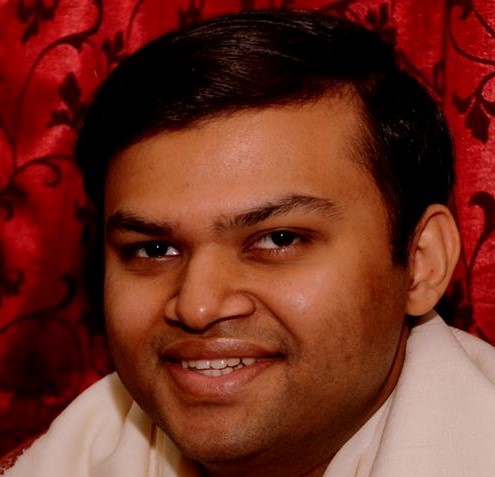
Dr Suddhasattwa Brahma, University of Edinburgh, UK

Dr Suddhasattwa Brahma, University of Edinburgh, UKDr Suddhasattwa Brahma received his PhD from the Pennsylvania State University under the supervision of Professor Martin Bojowald. Since then, he has been a postdoctoral researcher at the Fudan University (Shanghai), at APCTP (South Korea) and at the McGill University (Montreal). Dr Brahma received the ‘International Exchange Postdoctoral Fellowship’ from China while at the Fudan University and the CITA National Fellowship while at the McGill University. Currently, he is a Higgs Fellow at the University of Edinburgh. His research focusses on quantum aspects of gravity and its applications for early-universe cosmology and black hole physics. |
| 12:15-12:30 |
Discussion
|
| 12:20-13:20 |
Lunch
|
Chair
Professor Mairi Sakellariadou, King's College London, UK
Professor Mairi Sakellariadou, King's College London, UK
| 13:30-14:00 |
Quantum gravity here and now, and at the end of the world
Professor João Magueijo will review a recent approach to connecting quantum gravity and the real world by deconstantizing the constants of nature, and using their conjugate as a time variable. This is nothing but a generalization of unimodular gravity. The wave functions are then packets of plane waves moving in a space that generalizes the Chern-Simons functional. For appropriate states they link up with classical cosmology in the appropriate limit. There are however deviations, namely during the matter to Lambda transition, raising the possibility that quantum gravity could be in action here and now. At the other extreme Professor Magueijo will show how this approach can be used to resolve the cosmological singularity, and perhaps more. 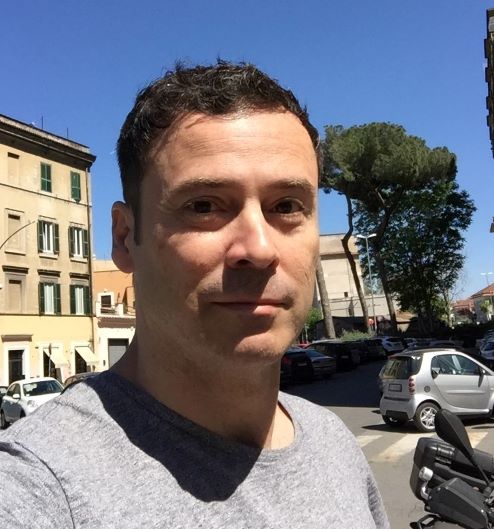
Professor João Magueijo, Imperial College London, UK

Professor João Magueijo, Imperial College London, UKJoão Magueijo was born in Portugal. He got a PhD in Theoretical Physics at Cambridge University in 1993, following which he became a Research Fellow at St John's College, specializing in Early Universe Cosmology. Since 1996 he has been at Imperial College, first as a Royal Society Fellow, then as staff, becoming a Full Professor in 2006. His work includes an attempt to build cosmology upon theories permitting the variation of the fundamental constants of nature, including the speed of light. More recently he has worked on quantum gravity theories, and how cosmology may be used as their 'test tube'. He has written two popular science books, a travelogue and a novel. |
|---|---|
| 14:00-14:15 |
Discussion
|
| 14:15-14:45 |
Tensions in cosmology and implications for the standard model
The scenario that has been selected as the standard cosmological model is Lambda Cold Dark Matter (ΛCDM), which provides a remarkable fit to the bulk of available cosmological data. However, discrepancies among key cosmological parameters of the model have emerged with different statistical significance. While some portion of these discrepancies may be due to systematic errors, their persistence across probes can indicate a failure of the canonical ΛCDM model. Dr Di Valentino will review these tensions, showing some interesting extended cosmological scenarios that can alleviate them. 
Dr Eleonora Di Valentino, University of Sheffield, UK

Dr Eleonora Di Valentino, University of Sheffield, UKDr Eleonora Di Valentino had her PhD in La Sapienza University of Rome, with a thesis about constraining fundamental physics with cosmological data. She then moved to the Institute d'Astrophysique de Paris, with a Lagrange fellowship, where she joined the team working on the likelihood for the Planck CMB satellite experiment. After that Dr Di Valentino accepted a postdoctoral position in Manchester, UK, to work in the Dark Energy Survey collaboration, followed by an Addison-Wheeler fellowship in Durham, UK, to work on cosmological tensions. She finally obtained her current position as a Royal Society Dorothy Hodgkin Research Fellow at the University of Sheffield, UK. |
| 14:45-15:00 |
Discussion
|
| 15:00-15:30 |
Break
|
| 15:30-16:00 |
Cosmological implications of the Swampland Program and the Dark Dimension
Consistency with quantum gravity can have significant consequences on low energy physics. Not every effective field can be consistently coupled to quantum gravity unless it satisfies some additional consistency constraints, dubbed swampland constraints. In this talk Dr Irene Valenzuela will review the most important swampland conjectures and their implications for cosmology. The best understood constraints imply that theories with very small gauge couplings or parametrically large scalar field variations are inconsistent with quantum gravity. The author will also describe recent progress regarding whether accelerating cosmologies at parametrically large time can be embedded in string theory. Furthermore, she will describe a scenario motivated by the swampland program in which the smallness of the cosmological constant emerges from living near a boundary of the quantum gravity field space. A universal feature of this scenario is that there is a light infinite tower of states which is correlated to the value of the vacuum energy. Dr Valenzuela will show how experimental constraints force this tower to correspond to a KK tower (of mass of order neutrino scale) of a single extra mesoscopic dimension of order 10^{-6) m, which we denote as the dark dimension. 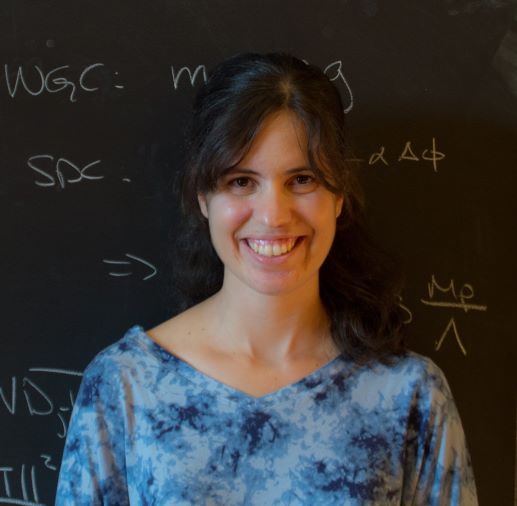
Dr Irene Valenzuela, the European Organization for Nuclear Research (CERN), Switzerland, and the Institute for Theoretical Physics (IFT), Madrid, Spain

Dr Irene Valenzuela, the European Organization for Nuclear Research (CERN), Switzerland, and the Institute for Theoretical Physics (IFT), Madrid, SpainIrene Valenzuela obtained her PhD in theoretical physics at Universidad Autonoma de Madrid in 2015. Subsequently, she has held postdoctoral positions at the Max Planck Institute for Physics (Munich), Utrecht University, Cornell University and Harvard University. In 2021 she got a ‘Ramon y Cajal’ grant to start a tenure-track position at the Institute of Theoretical Physical UAM-CSIC in Madrid. Since 2022, she is also a scientific staff member at the European Organization for Nuclear Research (CERN). She has received the 2021 Award for Young investigator in theoretical physics funded by the Royal Spanish Society of Physics and an ERC Starting Grant in 2021. Her research focuses on quantum gravity (in particular, string theory) and its interplay with particle physics and cosmology. She is internationally recognized as a leading figure of the swampland program, which is a new way to connect string theory with our universe based on determining the universal constraints that quantum gravity imposes at low energies. She has pioneered several of the phenomenological implications of the swampland program as well as opened new avenues to rigorously test the swampland conjectures in string theory. Her work has unveiled many interesting connections between the swampland constraints and other research topics such as categorical symmetries, holography, black hole entropy bounds and algebraic geometry. |
| 16:00-16:15 |
Discussion
|
| 16:15-17:00 |
Panel discussion/Overview
|
Chair

Professor João Magueijo, Imperial College London, UK

Professor João Magueijo, Imperial College London, UK
João Magueijo was born in Portugal. He got a PhD in Theoretical Physics at Cambridge University in 1993, following which he became a Research Fellow at St John's College, specializing in Early Universe Cosmology. Since 1996 he has been at Imperial College, first as a Royal Society Fellow, then as staff, becoming a Full Professor in 2006. His work includes an attempt to build cosmology upon theories permitting the variation of the fundamental constants of nature, including the speed of light. More recently he has worked on quantum gravity theories, and how cosmology may be used as their 'test tube'. He has written two popular science books, a travelogue and a novel.
| 09:00-09:30 |
Probing the origin of spacetime by heavy particles
Inflation is the leading paradigm for the origin of our observable universe. However, persuaded by some objections to it, several alternatives are also proposed that are so far observationally indistinguishable from inflation. While the arguments for and against inflation (some of which are rather philosophical) remain debatable, it would be of significant value if it is possible to let observation make the ultimate decision. In this talk, the author will introduce the so-called standard clock as such a possibility. The standard clock is a massive field that is naturally expected to exist at the early stages of the universe and which may have distinct imprints on the fluctuations. Importantly, since some features of the standard clock signal are sensitive to the evolution of the universe at its early stages, it can be an observational smoking gun for discriminating inflation from alternatives. 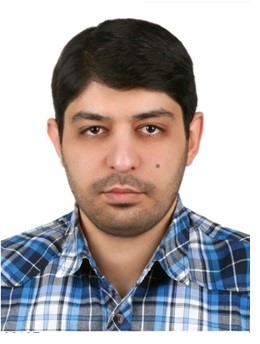
Dr Mohammad Hossein Namjoo, The Institute for Research in Fundamental Sciences (IPM), Iran

Dr Mohammad Hossein Namjoo, The Institute for Research in Fundamental Sciences (IPM), IranDr Mohammad Hossein Namjoo received his PhD in 2013 from the Institute for Research in Fundamental Sciences (IPM), Iran. He then spent four years as a post-doctoral researcher at the University of Texas at Dallas, Harvard, and MIT. After that, he joined IPM as a faculty member, where he currently works as an Associate Professor. |
|---|---|
| 09:30-09:45 |
Discussion
|
| 09:45-10:15 |
The observational prospects of primordial features in the next decade
Primordial features are small but strongly scale-dependent corrections to the leading order density perturbations seeded by a wide range of physics in the primordial universe. Information encoded in these primordial feature signals could be used to distinguish the inflation scenario from other alternative scenarios model-independently, and/or to narrow down the physical mechanism underlying the inflation model. The authors discuss the future observational prospects of these primordial feature signals, especially with the measurements of the CMB E-mode polarization in the next decade. 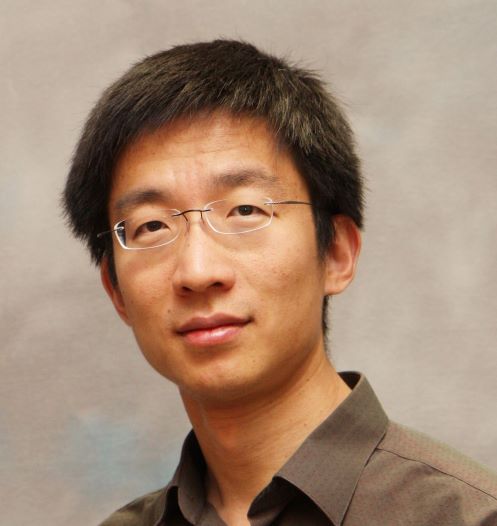
Dr Xingang Chen, Harvard University, USA

Dr Xingang Chen, Harvard University, USADr Chen received his PhD from Columbia University in 2003 and held post-doctoral positions at the University of Florida, Cornell University and MIT. He was then a Stephen Hawking Advanced Fellow in the University of Cambridge. Before moving to Harvard University, he was an Assistant Professor at the University of Texas at Dallas. Dr Chen's research interest is theoretical cosmology, which includes early universe models, primordial density perturbations, cosmic microwave background, large scale structure, dark matter, and string cosmology. |
| 10:15-10:30 |
Discussion
|
| 10:30-11:00 |
Break
|
| 11:00-11:30 |
Aberration of gravitational waveforms by peculiar velocity
Dr Giulia Cusin will review the effects of peculiar velocities on the observed waveform of a binary system of compact objects visible by LISA. She will then focus on the effects of a velocity component transverse to the line of sight, and show that it gives rise to spin-1 polarisation in the observer frame even in the context of General Relativity. These are pure projection effects, proportional to the plus and cross polarisations in the source frame, hence they do not correspond to new degrees of freedom. The author demonstrates that the spin-1 modes can always be rewritten as pure spin-2 modes coming from an aberrated direction. Since gravitational waves are not isotropically emitted around binary systems, this aberration modifies the apparent orientation of the binary system with respect to the observer: the system appears slightly rotated due to the source velocity. Dr Giulia Cusin, The Institut d'Astrophysique de Paris, France
Dr Giulia Cusin, The Institut d'Astrophysique de Paris, FranceBiography will be available soon. |
| 11:30-11:45 |
Discussion
|
| 11:45-12:15 |
Quantum origin of spacetime in the era of gravitational astronomy
Professor Mairi Sakellariadou will briefly introduce approaches to quantum gravity and summarise some of their phenomenological and observational implications. She will then employ currently available observational data, with emphasis in gravitational waves, in order to test theories aiming at explaining the origin of spacetime. Professor Mairi Sakellariadou, King's College London, UK
Professor Mairi Sakellariadou, King's College London, UK |
| 12:15-12:30 |
Discussion
|
Chair
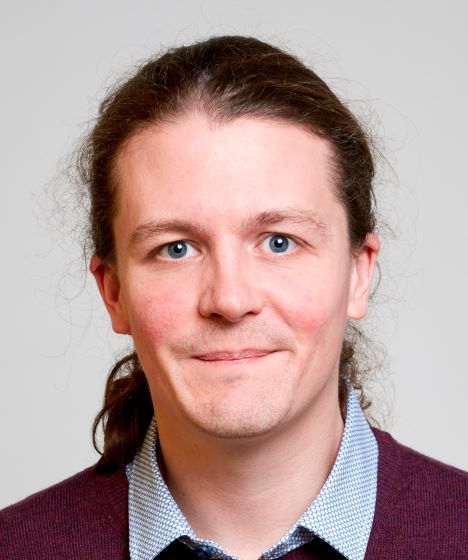
Dr Steffen Gielen, University of Sheffield, UK

Dr Steffen Gielen, University of Sheffield, UK
Steffen Gielen is a Royal Society University Research Fellow (URF) at the University of Sheffield. He obtained his PhD from DAMTP, University of Cambridge in 2011, held postdoctoral positions at the Albert Einstein Institute, Perimeter Institute for Theoretical Physics and Canadian Institute for Theoretical Astrophysics, as well as a Marie Curie Fellowship at Imperial College London (2014-16). He started his Royal Society URF at the University of Nottingham, moving to Sheffield in 2019. Much of Steffen's research is driven by understanding the implications of quantum theories of gravity for our cosmological models of the very early universe. In particular, he studies ways in which the classical Big Bang singularity might be resolved in quantum theory.
| 13:30-14:00 |
Emergent cosmology from quantum gravity condensates
In the group field theory (GFT) framework for quantum gravity, effective cosmological dynamics emerge as the hydrodynamics of simple condensates of quanta of geometry. The quantum equations of motion for these GFT condensate states are given in relational terms with respect to the matter field (here assumed to be a scalar field), and these imply dynamics for the volume of the universe that correspond to modified Friedmann equations, with quantum gravity modifications, in a specific regime of the theory corresponding to a Gross–Pitaevskii approximation where interactions are subdominant. The classical Friedmann equations of general relativity are recovered in a suitable semi-classical limit, while the quantum geometries associated with these GFT condensate states are non-singular: a bounce generically occurs in the Planck regime. For some choices of condensate states, these modified Friedmann equations are very similar to those of loop quantum cosmology. 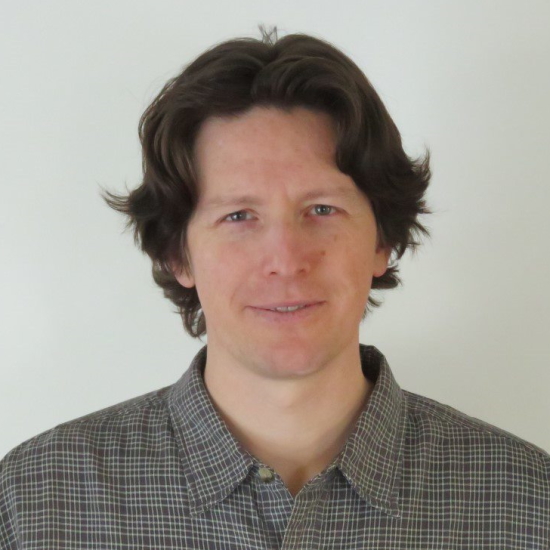
Dr Edward Wilson-Ewing, University of New Brunswick, Canada

Dr Edward Wilson-Ewing, University of New Brunswick, CanadaEdward Wilson-Ewing is an Associate Professor in the Department of Mathematics and Statistics at the University of New Brunswick. His research lies in the field of quantum gravity, with a particular interest on the implications of quantum gravity for the cosmology of the early universe and for black holes. Edward obtained his PhD from Pennsylvania State University and his BSc from Bishop's University, and was a postdoctoral fellow at Aix-Marseille University, Louisiana State University, and the Max Planck Institute for Gravitational Physics. |
|---|---|
| 14:00-14:15 |
Discussion
|
| 14:15-14:45 |
Partition function for a volume of space
The authors of the talk consider the quantum gravity partition function that counts the dimension of the Hilbert space of a spatial region with topology of a ball and fixed proper volume, and evaluate it in the leading order saddle point approximation. The result is the exponential of the Bekenstein-Hawking entropy associated with the area of the saddle ball boundary. This generalizes the classic Gibbons-Hawking computation which corresponds to the special case when the fixed volume is that of the static patch of de Sitter spacetime, and exhibits the holographic nature of nonperturbative quantum gravity in finite volumes of space. 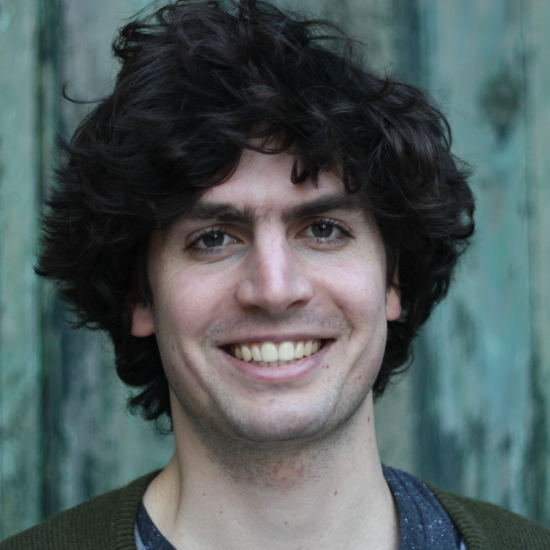
Manus Visser, University of Cambridge, UK

Manus Visser, University of Cambridge, UKManus Visser is a postdoc in the group of Aron Wall at the Department of Applied Mathematics and Theoretical Physics in Cambridge. He received his PhD in theoretical physics from the University of Amsterdam under the supervision of Erik Verlinde, and was a postdoc at University of Geneva. His research focuses on quantum gravity, black hole thermodynamics, and holography. In particular, he has worked on thermal and holographic properties of horizons, such as the cosmological horizon and the null boundary of causal diamonds. He also holds a longstanding interest (and is educated) in philosophy of physics, especially in questions related to the meaning of spacetime. |
| 14:45-15:00 |
Discussion
|
| 15:00-15:30 |
Break
|
| 15:30-16:00 |
Learning the origin of structure from galaxy surveys
If the structure in our Universe is sourced by quantum fluctuations during inflation, but not by fluctuations in the inflation, a non-Gaussian signature of the conversion of these fluctuations into curvature may be imprinted in data from galaxy surveys. In the next decade, galaxy surveys will reach an important threshold: the ability to detect the non-Gaussian parameter fNL ~1, which would test a variety of scenarios in which structure is sourced by an additional light field. The author will review the signature of fNL in galaxy surveys and present a new study of astrophysical signals that, if not accounted for, could confuse measurements. 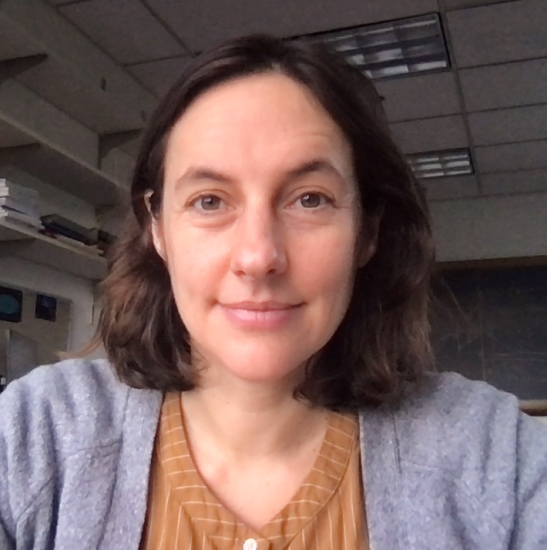
Professor Marilena Loverde, University of Washington, USA

Professor Marilena Loverde, University of Washington, USAMarilena Loverde is the Dr Ann Nelson Endowed Associate Professor of Physics at the University of Washington. She received a BA in Physics and Mathematics from the University of California, Berkeley, a PhD in Physics from Columbia University, and did postdoctoral studies at the Institute for Advanced Study in Princeton and at the University of Chicago. Prior to moving to the University of Washington, Loverde was an Assistant Professor Physics in the CN Yang Institute for Theoretical Physics at Stony Brook University. Loverde's research is centred on understanding the origin and evolution of structure in the Universe, from inflation until today. She is co-chair of the Maps to Parameters analysis working group for the CMB-S4 Experiment. |
| 16:00-16:15 |
Discussion
|
| 16:15-17:00 |
Panel discussion/overview
|
